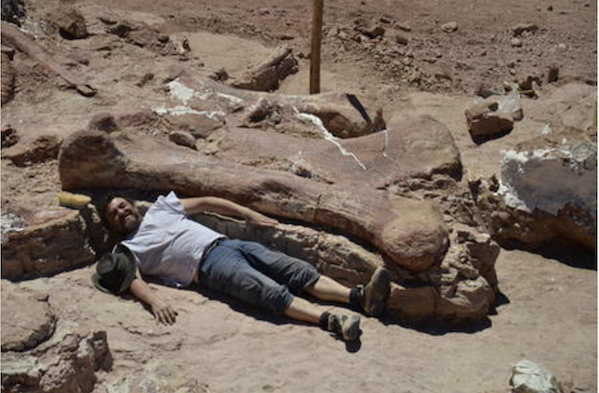
BY PAUL SCHINDLER | The Earth’s is more recent than the Jurassic Era popularized by the biggest dinosaur movies of all time, but it featured a more diverse dinosaur population than its preceding period.
This coming weekend, the American Museum of Natural History opens a new exhibition in its Fossil Halls featuring a cast of a 122-foot-long dinosaur, one of the largest ever discovered. Paleontologists, working in a desert region of Patagonia, unearthed remains of the giant herbivore in 2014 and say the creature lived approximately 95 to 100 million years ago, during the Late Cretaceous period. This dinosaur, which belongs to a group known as titanosaurs and is estimated to have weighed around 70 tons, has not yet been named.
The excavation was carried out by a team from the Museum of Paleontology Egidio Feruglio in Trelew, Argentina, led by José Luis Carballido and Diego Pol.
The dinosaur is so large that it grazes the fourth floor exhibition hall’s 19-foot ceiling, and its neck and head extend out toward the elevator banks to welcome visitors to the museum’s dinosaur floor.
The exhibit runs January 15 of this year through January 19, 2020.
THE TITANOSAUR | American Museum Of Natural History, Central Park W. at 79th St. | Jan. 15, 2015-Jan. 19, 2020: daily, 10 a.m.-5:45 p.m. | $22; $17 for students & seniors; $12.50 for ages up to 12 | amnh.org






























